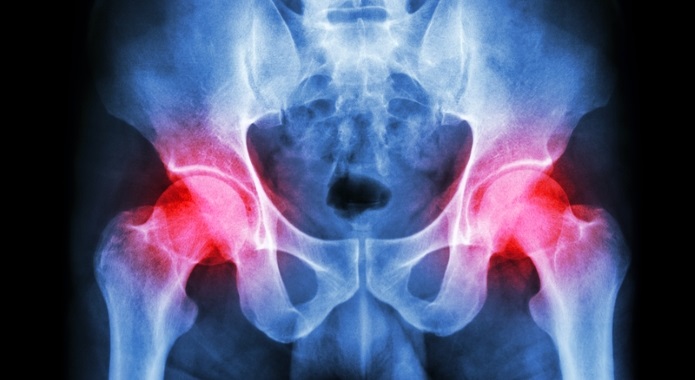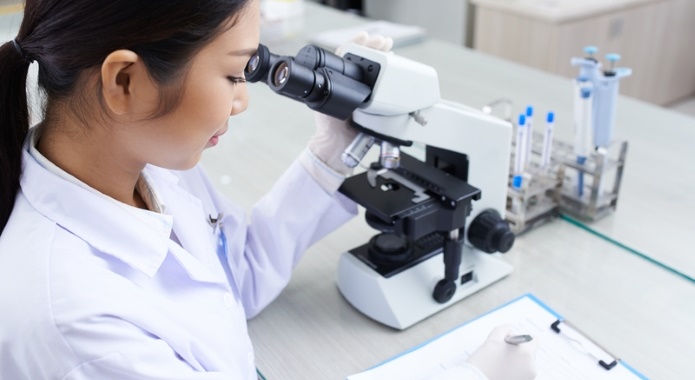
REMEMBER: These Are The 9 MOST Powerful Benefits of Spirulina! Pay SPECIAL Attention to Benefit #8! These Tips Helped Over 26,000 Readers! AWESOME Photos Included!
You don’t have to worry; spirulina is not the newest miracle cure on the market. It has been around since the 1950´s, and while it does provide numerous health benefits, it is not a flash-in-the-pan!
It is more along the lines of a Super Food than anything else. It’s a type of blue-green algae that some people mistake for chlorella. These algae grow well in warm sunny bodies of water that are highly alkaline!
Although it has been around since the 9th century, its commercial production started in the 1970s by a French company. It can endure extreme levels in temperature as well as hydration.
The extensive list of things it can do has caused it to be re-evaluated as an excellent source of food, a nutritional supplement, and in some cases even an efficient medical treatment.
Way #1 – Maintains Your Eyes Healthy

Spirulina contains a substance called xanthophyll that is like a carotene. You may have heard your parents tell you when you were growing up to eat your carrots, or you were going to have to wear glasses.
That’s because carrots have carotene in them as well. The xanthophyll helps to cut down on cataracts and the macular degeneration that comes with age.
Related research study:
“Thus, results show that UVB irradiation is able to induce apoptosis in ARPE-19 cells through oxidative stress; however anthocyanins and xanthophylls pre-treatment can attenuate this damage. This suggests that cyanidin-3-O-glucoside, lutein and zeaxanthin are effective in preventing UVB-induced damage in RPE [retinal pigment epithelial] cells and may be suitable as chemoprotective factors for the prevention of ocular damage. The use of natural dietary antioxidants might reduce ocular oxidative damage caused by UVB radiation.”
– Silván, J. M., et al. (2016). “A protective effect of anthocyanins and xanthophylls on UVB-induced damage in retinal pigment epithelial cells“, in Food & Function, Vol. 7(2).
Way #2 – Reduces Inflammation

This plant is considered a primary source of Gamma-Linolenic Acid (GLA), which is a potent natural anti-inflammatory agent. It helps women with PMS symptoms and having 26-times more calcium than milk it is beneficial for women who are pregnant.
What is more, its effects on arthritis were tested to see if it had any effect on the disease. After just eight days of taking this unique kind of blue-green algae, the inflammation from the arthritis was brought to an almost normal level.
Related research study:
“Oral administration of Spirulina fusiformis (800 mg/kg/b.wt) significantly altered these above physical and biochemical changes observed in arthritic animals to near normal conditions. Hence results of this study clearly indicate that Spirulina fusiformis has promising anti-inflammatory activity against adjuvant-induced arthritic animals.”
– Rasool, M., et al. (2006). “Anti-inflammatory effect of Spirulina fusiformis on adjuvant-induced arthritis in mice“, in Biological & Pharmaceutical Bulletin, Vol. 29(12).
Way #3 – Protects Against Allergic Reactions

To gauge the effect that spirulina could have for allergy sufferers, researchers conducted a clinical test. The patients who received the placebo showed no improvement in their allergy relief. The group that took 1000 mg a day didn’t have any relief either.
But the group who received 2000 mg of spirulina for the 12-week test saw a significant improvement in their allergic reactions. It was able to cut down on many of the usual symptoms of allergies such as sneezing, nasal discharge, itching, and even congestion.
Related research study:
“Spirulina consumption significantly improved the symptoms and physical findings compared with placebo (P < 0.001***) including nasal discharge, sneezing, nasal congestion and itching. Spirulina is clinically effective on allergic rhinitis when compared with placebo. Further studies should be performed in order to clarify the mechanism of this effect.”
– Cingi, C., et al. (2008). “The effects of spirulina on allergic rhinitis“, in European Archives of Oto-rhino-laryngology, Vol. 265(10).
Way #4 – Destroys Bacteria & Viruses

Spirulina has an antimicrobial effect that limits the growth of pathogenic yeasts and bacteria. It can oxygenate your blood, and the chlorophyll is good for its cleansing. It has been shown to keep the candida yeast infection under control by creating an environment of healthy bacteria to grow in your guts.
One of the main and most powerful effects is its ability to inactivate the virus that results in the AIDS. It helps with the symptoms that many patients have to endure for the treatment of AIDS disease as well.
Related research study:
“A sulfated polysaccharide named calcium spirulan (Ca-SP) has been isolated from a sea alga, Spirulina platensis, as an antiviral component. The anti-human immunodeficiency virus type 1 (HIV-1) and anti-herpes simplex virus type 1 (HSV-1) activities of Ca-SP were compared with those of dextran sulfate (DS) as a representative sulfated polysaccharide.”
– Hayashi, K., et al. (1996). “A natural sulfated polysaccharide, calcium spirulan, isolated from Spirulina platensis: in vitro and ex vivo evaluation of anti-herpes simplex virus and anti-human immunodeficiency virus activities“, in AIDS Research and Human Retroviruses, Vol. 12(15).
Way #5 – Boosts Your Immunity

Researchers discovered that spirulina improves your immune system by encouraging it to produce more monocytes, macrophages, and natural cells. All these work together to prevent the dangerous pathogens from invading your body.
Additionally, it can promote the regeneration of cells. With a robust immune system, you can heal faster from wounds. Not only that, you are less likely to get sick in the first place from the flu, illnesses, and even the common cold.
Related research study:
“The results from the present study adds to the increasing evidence that oral administration of bacterial components that activate innate immune cells, whether derived from a bacterial preparation (probiotics or cyanobacteria) or from plant material containing endophytic bacteria, can exhibit a protective effect against influenza A (H1N1) viral infection.”
– Pugh, N. D., et al. (2015). “Oral administration of a Spirulina extract enriched for Braun-type lipoproteins protects mice against influenza A (H1N1) virus infection“, in Phytomedicine, Vol. 22(2).
Way #6 – Naturally Detoxify Your Body

With its high levels of chlorophyll, this amazing product of nature is considered a potent detoxifying agent. Spirulina, especially when used during a fasting cleanse, can accelerate the processes of detoxification of your body.
This miracle plant has been found to lower the toxicity of your kidneys that is caused by the infiltration of certain heavy metals. It was used to help the children who suffered from the effects of the radiation from Chernobyl.
Related research study:
“It was concluded that Spirulina maxima has protective effects on lead acetate-induced damage, and that the effects are associated with the antioxidant effect of Spirulina.”
– Ponce-Canchihuamán, J. C., et al. (2010). “Protective effects of Spirulina maxima on hyperlipidemia and oxidative-stress induced by lead acetate in the liver and kidney“, in Lipids in Health and Disease.
Way #7 – Great Source of Protein

With more than 60 percent of its weight consisting of amino acids, spirulina is incredibly rich in protein. It is being considered as a food resource for third world countries that face famine as a way of life.
More precisely, this plant can be a valuable form of sustenance for the people, and because it can grow under less than perfect conditions, it may be easily replenishable.
Related research study:
“The utilization of algae, particularly Spirulina, as a functional food was suggested decades ago due to the fact that it is not only a protein-dense food source, but because its amino acid profile is considered as of high biologic-value protein content.”
– Gutiérrez-Salmeán, G., et al. Nutritional and Toxicological Aspects of Spirulina (Arthrospira). 2015. Nutrition Hospitalaria. 32(1): p. 34-40.
Way #8 – Reduces High Cholesterol Levels

What is more, this natural product has been shown to increase your good cholesterol while at the same time reducing the bad one. It has been tested in a study by the Chungnam National University of South Korea.
The test was not conducted using humans, however, taking this substance in conjunction with a healthy approach towards diet and exercise led to a reduction of blood cholesterol levels. It helped to remove the bad one (LDL) out of bodily systems.
Related research study:
“These results suggest that spirulina intake can cause the reduction of hypercholesterolemic atherosclerosis, associated with a decrease in levels of serum TC, TG and LDL-C, and an elevation of HDL-C level. Spirulina may, therefore, be beneficial in preventing atherosclerosis and reducing risk factors for cardiovascular diseases.”
– Cheong, S.H., et al. (2010). “Spirulina prevents atherosclerosis by reducing hypercholesterolemia in rabbits fed a high-cholesterol diet.“, in Journal of Nutritional Science and Vitaminology, Vol. 56(1).
You should not stop taking any prescription drugs while starting to eat these blue-green algae and you should consult taking spirulina with your doctor so he or she can monitor your health.
Benefit #9 – Strong Antioxidant

Another primary element of this plant is C-phycocyanin, which is a substance that gives these algae their blue-green color. It is a very potent antioxidant that helps fight the damages that free radicals cause to your body.
These are bad cells that thrive on the good ones and encourage the growth of cancer.
More precisely, spirulina is rich in vitamin E, carotenoids, selenium, and phenolic acids. Thanks to these substances it has achieved the status as a powerful antioxidant that will help protect your entire body in so many ways.
Did you know?
This super food has four times the antioxidant power as blueberries. Besides fighting natural infections as they occur, it can improve your protection from cancer, heart diseases and even type 2 diabetes.
Related research study:
“These anti-inflammatory effects of Pc [Phycocyanin] can be due to its scavenging properties toward oxygen reactive species (ROS) and its inhibitory effects on cyclooxygenase 2 (COX-2) activity and on Hi [histamine] release from mast cells. Pc also reduced the levels of tumor necrosis factor (TNF-alpha) in the blood serum of mice treated with endotoxin and it showed neuroprotective effects in rat cerebellar granule cell cultures and in kainate-induced brain injury in rats.”
– Romay, Ch., et al. C-phycocyanin: a biliprotein with antioxidant, anti-inflammatory and neuroprotective effects. Curr Protein Pept Sci. 2003. 4(3): p. 207-16.
While the health benefits of spirulina continue to grow it’s hard to deny something that has so many qualities that work to improve the human body. This is a natural supplement that can help you with everything from the well-being of your eyes to the prevention of cancer and heart disease.







